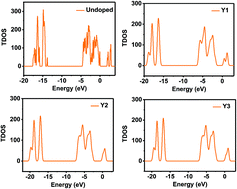Conductivity and mixed conductivity of a novel dense diffusion barrier and the sensing properties of limiting current oxygen sensors
Abstract
First-principles calculations were used to explore the effect of various Y-doping levels on the electrical conductivity of SrTiO3. Herein, we prepared ((Y0.07Sr0.93Ti0.6Fe0.4−xO3−δ)/x/3Co3O4 (x = 0.1, 0.2, 0.3)) composites using a solid state reaction method. The properties of these sensing materials and the fabricated sensors including crystal phase composition, microstructures, oxygen ionic conductivity, total conductivity and sensor performance were investigated in detail. XRD demonstrates the formation of a highly cubic perovskite structure. The introduction of Co3O4 promotes remarkably the electronic conductivity of the Y0.07Sr0.93Ti0.6Fe0.4−xO3−δ/x/3Co3O4 composites due to the formation of n-type CoO and p-type Co2O3. A limiting current oxygen sensor based on (Y0.07Sr0.93Ti0.6Fe0.4−xO3−δ)/x/3Co3O4 as a dense diffusion barrier shows excellent sensing performance. The recovery time is less than the response time, indicating that Co2O3 promotes the gas desorption reaction which results in a shorter recovery time. The obtained results demonstrate a direct relationship between limiting current (IL) and oxygen content.



 Please wait while we load your content...
Please wait while we load your content...